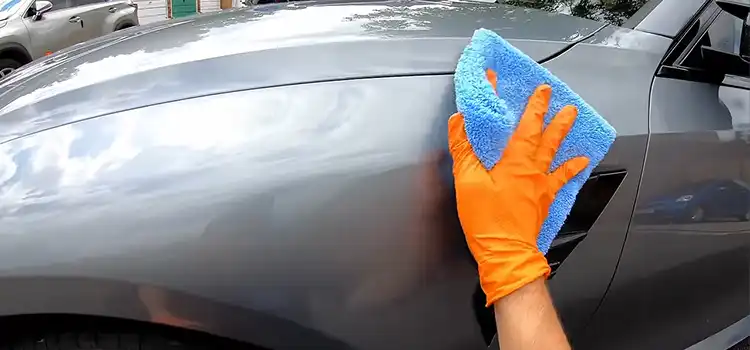It’s a familiar frustration – you spend time washing your car, only to step back afterward and see it still looks dirty. Muddy water, greasy residues, and dull paint persist despite your scrubbing efforts. Many factors beyond just soap and water go into properly cleaning a vehicle.
Washing a car can seem pretty straightforward – spray it down, lather up some soapy water, rinse it off. But the reality is that effectively removing contaminants and revealing true paint clarity takes the right techniques and tools.
Don’t lose hope for a sparkling clean car. Identify where the process is falling short and make the necessary corrections for supreme cleansing. Here is how to troubleshoot a car that seems stubbornly dirty even after a wash.

What Are Common Car Washing Mistakes?
Several common mistakes during washing often leave cars looking less than pristine:
Using Only Pressure Water: Relying solely on pressure water might remove loose dirt, but it won’t tackle the more stubborn grime clinging to your car’s surface.
Insufficient Soap: Using too little soap is a common mistake. Soap helps break down dirt and contaminants, so be generous with it.
Improper Rinsing: Leaving soap residue behind can contribute to a dull finish. Thoroughly rinse your car to ensure a clean surface.
Hard Water: Hard water can leave mineral deposits on your car, affecting its appearance. Consider using a water softener or filtered water.
Improper Drying: Air-drying can lead to water spots. Use a microfiber towel to gently and thoroughly dry your car.
Contaminants in the Wash Water: Dirty wash water only redeposits grime onto your car. Regularly change the wash water for effective cleaning.
Improper Washing Technique: Scrubbing vigorously can damage your car’s paint. Opt for a gentle washing technique to preserve its luster.
Dulled Paint: Certain colors, like black, require extra care. Improper washing and drying techniques can contribute to a dull appearance.
Car Washing Under the Hot Sun: Washing your car under the scorching sun can lead to premature drying of soap and water, leaving streaks and water spots.
Car Washing on a Windy Day: Windy conditions can introduce dirt and debris to your freshly washed car, counteracting your efforts to achieve a spotless finish.
The basic soap and water wash alone often prove insufficient when these missteps diminish its cleaning ability.
Effective Car Washing Techniques
Here are some tips to take your car washing to the next level for spotless results:
- Choose the Right Soap: Invest in a high-quality car wash soap designed to break down contaminants without harming your car’s finish.
- Wash in the Shade: Avoid washing your car in direct sunlight to prevent water spots and soap residue from forming.
- Use a Two-Bucket Method: Minimize the risk of scratches by employing a two-bucket method—one for soapy water and another for rinsing.
- Rinse Thoroughly: Ensure a clean finish by rinsing your car thoroughly, removing all traces of soap.
- Use a Microfiber Towel: Ditch the old bath towel and opt for a soft, microfiber towel to gently dry your car without leaving lint or scratches.
- Consider Using a Water Filter: A water filter can help eliminate mineral deposits from hard water, preventing unsightly spots on your car’s surface.
- Afterwash Care: Clay, polish, or wax as needed to target bonded contaminants or dull faded paint.
The right techniques make all the difference in unlocking true paint clarity and a spotless finish.
Additional Tips for Maintaining a Clean Car
Beyond just addressing washing mistakes, you can promote better cleanliness between washes by:
- Washing your car weekly if possible based on usage and weather exposure. Don’t let dirt buildup.
- Applying protectant wax or sealant to create a barrier against contaminants bonding to the paint.
- Quickly cleaning up any sap, bird droppings, overspray, and other problematic spills before they have a chance to set.
- Avoiding parking under trees or anywhere else exposing the car to environmental grime.
A regular maintenance regimen prevents embedded grime and keeps that just-washed look longer.
FAQs
Q: How can I tell if my car’s paint is oxidized?
A: Oxidized paint may appear dull, faded, or chalky. Run your hand over the surface—if it feels rough, oxidation may be present.
Q: What is the best way to dry a car to prevent water spots?
A: Using a soft, microfiber towel in a blotting motion is an effective way to prevent water spots during drying.
Q: What causes water spots, and how can I remove them?
A: Water spots are caused by mineral deposits in hard water. Remove them using a mixture of vinegar and water or a dedicated water spot remover.
Q: How can I tell if my car wax or sealant needs to be reapplied?
A: Water should bead up on a well-waxed or sealed surface. If it doesn’t, it may be time to reapply the wax or sealant.
